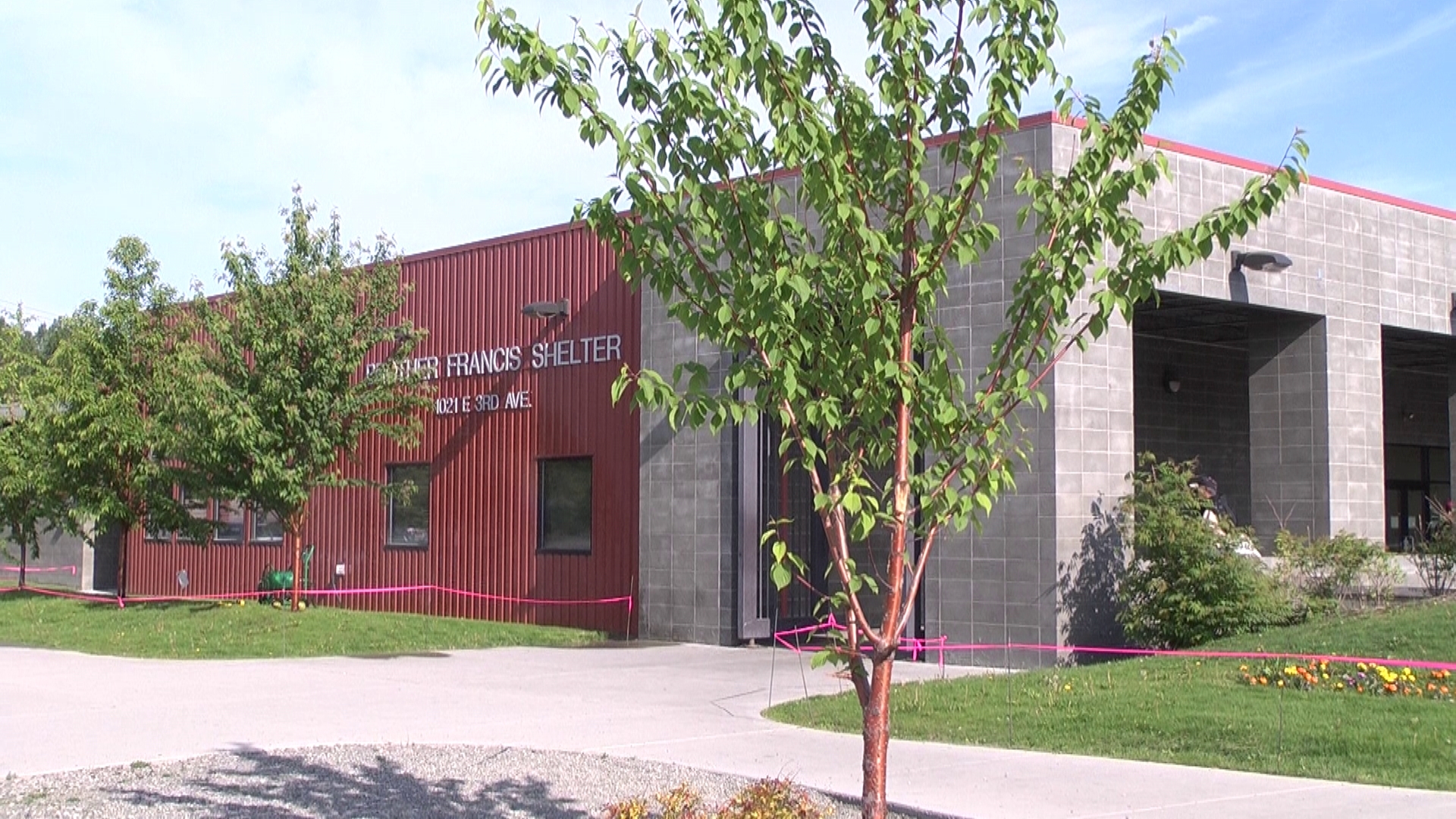Anchorage’s homeless shelters and social services are drastically and unexpectedly overwhelmed as a consequence a shifting policy pushing people out of homeless camps.

Summer is usually a relatively quiet time for direct service providers working with the city’s homeless population. Typically people are living in camps or doing seasonal work, according to Lisa Aquino, the executive director of Catholic Social Services, which oversees the Brother Francis Shelter in downtown Anchorage. This summer the shelter has consistently been at maximum capacity.
“Almost every day there’s 240 people inside,” Aquino said.
That number doesn’t include the 50 to 70 people a night the shelter can’t accommodate, who have been sleeping outside.
Aquino was one of three social service providers to testify before the Anchorage Assembly’s committee on homelessness Wednesday. They all said they are seeing the same large influx of people in need of help, taxing staff, and making it hard to keep up with even basic things, like serve enough food during meal-times.
Part of the reason is growing pressure on unsanctioned camps in parks and along trails throughout the city.
“There’s been a real concerted effort by the municipality, by the police department, to crack down on camps,” Aquino said. “They’re letting people know to leave camps and that they should come down to Brother Francis Shelter and Beans Cafe and connect with services.”
The dry conditions and elevated fire dangers are another factor driving the crackdown on camps. Multiple fires within the municipality have broken out this summer, with at least one blamed on homeless campers.
Lisa Sauder, the director of Beans Cafe, told the committee the situation is creating new problems, like people coming to the campus with all their possessions. Without campsites, people have nowhere to store their things. Sauder explained Beans has freed up a portion of storage space so people can secure their belongings while they get food.
Service providers also say they are also seeing a higher volume of people coming to the facilities. Covenant House Executive Director Alison Kear said in 20 years of work she’d never seen so many people arriving during the summer, including a drastic uptick in minors between the ages of 14 and 16-years-old. Aquina with BFS said they’re seeing more and more senior citizens coming into the system for the first time.
Assembly member Bill Evans chairs the committees on homelessness and public safety, and said during a short interview the point of the city’s focus on driving homeless individuals out of camp sites is intended to “consolidate” people around social services.
However, without sufficient housing options brought online yet under the city’s broader Housing First strategy, it has created an unforeseen short-term problem.
“Between now and then, unfortunately, there’s no quick fix,” Evans said. “We have a long-term program in place that we think will address this, it’s going to be difficult this summer, it’s going to be difficult for about a year now. But things are looking up in the sense we have new grants in that I think will curb this in the long run.”
Evans hopes that 30 to 50 housing vouchers will become available soon, taking some of the pressure off the service providers in the area.
Meanwhile, the agencies said they barely have enough resources to keep up with a problem nobody saw coming, and that they expect it to last for weeks.
Zachariah Hughes reports on city & state politics, arts & culture, drugs, and military affairs in Anchorage and South Central Alaska.
@ZachHughesAK About Zachariah




